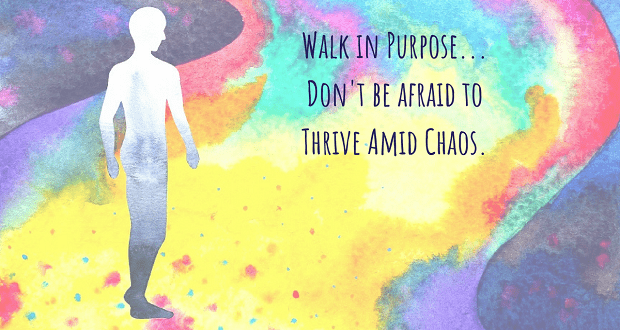Last year I was invited to provide coaching for a Board of Directors in their antiracism journey. After meeting with everyone individually, a common theme emerged: general lack of trust. Most people were afraid to speak up in meetings, fearing retaliation and judgement. As is typical with groups newly embarking on their equity journey, there were varying levels of openness to the work. A few people were staunchly resistant, seeing no reason for needing change, while several others were disillusioned by the inequities they’d seen and experienced firsthand.
It got me wondering: What are the conditions that create an environment lacking in trust? What would it take to move this group from a place of distrust to constructive dialogue centered on those most impacted by harmful inequities? Is that even possible?
These definitions by Charles Feltman illuminate the essence of trust in the clearest possible way:
Trust is choosing to risk making something you value vulnerable to another person’s actions. Distrust is deciding what is important to me is not safe with this person in this situation (or any situation). - Charles Feltman Share on XTrust is choosing to risk making something you value vulnerable to another person’s actions. Distrust is deciding what is important to me is not safe with this person in this situation (or any situation). – Charles Feltman
More often than not, the work of antiracism falls on Black, Indigenous, and People of Color (BIPOC) within primarily white institutions. When we share our stories of experiencing racism, we are making ourselves vulnerable to the reactions of those who do not share our experiences – which often causes a whole lot of harm (usually in the form of centering white comfort and discounting something as “not about race”). And not surprisingly, this dynamic erodes trust, retraumatizes BIPOC folx, and creates psychologically unsafe cultures.
If organizations are serious about the work of equity and justice, leaders will need to start with rebuilding trust. It takes significant time and effort to heal wounds and repair harm. Sometimes this will result in non-resolution and an employee will make the choice to exit the organization. And sometimes, it will result in a renewed sense of commitment.
If organizations are serious about the work of equity and justice, leaders will need to start with rebuilding trust. It takes significant time and effort to heal wounds and repair harm. Share on XSo, what does rebuilding trust look like in practice?
In her book Dare to Lead, Brene Brown breaks down each element of trust into the acronym BRAVING. Below, I will expand on each of these elements and share how organizations can operationalize these concepts in their equity and justice work.
Boundaries: You respect my boundaries, and when you’re not clear about what’s ok and not ok, you ask. You’re willing to say no.
While I worked in the nonprofit sector, we all wore a million hats, all the time. And usually we were happy to do “whatever it takes!” because our hearts were aligned with the mission of the organization. Over time, I saw a dangerous theme emerge: cultural taxation.
Chanté Griffin defines cultural taxation as:
The extra work staff of color take on by being the ethnic representation on committees and serving as unofficial diversity consultants. While the organization benefits from their presence and voices, workers are not compensated for these tasks. Instead, this tax leads to a second stressor—a heavier workload.
At two different nonprofits, I experienced a member of my team being asked to translate materials into another language without compensation or an adjustment of other duties. The second time this happened, I advocated for them to receive compensation and was successful. If you are a supervisor, a good way to build trust is to regularly check in with your team about what is on their plate and normalize supporting them to say no, and/or receiving compensation for this kind of extra work.
If you are a supervisor, a good way to build trust is to regularly check in with your team about what is on their plate and normalize supporting them to say no. Share on XBrown says, Daring to set boundaries is about having the courage to love ourselves, even when we risk disappointing others. She says it can be helpful to come back to a mantra, over and over: choose discomfort over resentment.
Brene Brown says, 'Daring to set boundaries is about having the courage to love ourselves, even when we risk disappointing others.' Come back to a mantra, over and over: choose discomfort over resentment. Share on X
Reliability: You do what you say you’ll do. At work, this means staying aware of your competencies and limitations so you don’t over-promise and are able to deliver on commitments and balance competing priorities.
In the context of antiracism work, putting out a statement and not following through on actionable change is a (predictable and all too common) breach of trust. Did your organization put out a statement, like so many others, after the murder of George Floyd? What actionable steps have you taken to do the deeply interpersonal and systemic work of correcting inequity and harmful patterns? I would venture to say, if you aren’t ready to act, don’t make a statement in the first place. Put the work first, so your demonstration is the evidence, not the statement.
If you aren’t ready to act, don’t make a statement in the first place. Put the work first, so your demonstration is the evidence, not the statement. Share on XAccountability: You own your mistakes, apologize, and make amends.
As noted in my previous Inclusion Solution blog post, you cannot operationalize justice without accountability. This work is messy, exhausting, humbling, and chock full of opportunities to be accountable to one another. I had a powerful experience of accountability in a past role, which I’ll share here.
You cannot operationalize justice without accountability. This work is messy, exhausting, humbling and chock full of opportunities to be accountable to one another. Share on XWhile in this role, I joined an employee book club where we read Whistling Vivaldi (a must read for any DEIJ practitioner). The group happened to be made up of all white people, except for myself. During our first meeting, the facilitator could not attend, so we were left to our own devices when it came to discussion. While the chapter being discussed was focused on racial stereotype threat, everyone managed to avoid the topic of race entirely, and recentered onto their own experiences of prejudice (class, mostly: ”white people suffer too”). It felt isolating and exhausting.
Later, a member of the group invited me to meet. They acknowledged that the group did not discuss race, the topic at hand, and apologized for not redirecting the conversation. It felt good to be acknowledged in that way, and as a result, deepened my trust for that individual.
Vault: You don’t share information or experiences that are not yours to share. I need to know that my confidences are kept, and that you’re not sharing with me any information about other people that should be confidential.
When I worked as a diversity recruiter at a college, I led the process and training for equitable hiring practices. In order to serve on a hiring committee, employees are required to sign an agreement about confidentiality, pledging that they would not share any information about the candidates outside of the search committee. Most people didn’t take this commitment very seriously. One day, someone’s breach in confidentiality ended up causing an immense amount of pain for a prospective internal candidate.
The person on the search committee was chatting with a colleague in an adjacent cubicle, sharing an update about who they selected for the job. Little did they know, the internal candidate was within earshot, and heard the entire conversation, learning that they were not selected for the position. Needless to say, the candidate was heartbroken and ended up leaving a few months later for another position.
Confidentiality matters. Never assume that what you share will be kept confidential. It can have unintended consequences.
Integrity: You choose courage over comfort. You choose what is right over what is fun, fast, or easy. And you choose to practice your values rather than simply professing them.
I once worked for an organization that spent an immense amount of time and resources co-creating our team values. I’m talking feel-good, heart-warming, singing together around a fire kind of vibe. As a result of that work, we discovered that our decision-making as an organization lacked transparency. We decided to implement an “equity lens” for more equitable decision making. The intention of the tool is to achieve a more equitable process and outcome, that explicitly draws attention to the inclusion of marginalized populations in decision making.
I worked with a small team to put this together, and we were proud of the final outcome. We shared it with the organization, and our Executive Director declared this as a required part of our process moving forward.
You can probably guess what happened after that – it was never used. Decisions continued to be made without transparency, and as a result, inequities persisted. There are few things more demoralizing than creating an equity tool that never gets used, and it happens all the time.
If you want to build trust, leaders need to demonstrate actionable commitment to values, rather than just professing them.
If you want to build trust, leaders need to demonstrate actionable commitment to values, rather than just professing them. Share on X
Nonjudgment: I can ask for what I need, and you can ask for what you need. We can talk about how we feel without judgment.
In the context of persistent anti-Black racism, the unrelenting COVID pandemic, global unrest, and natural disaster – employees are traumatized and exhausted. Admirably, many employers want to allow workers to take the time they need away from work. This usually sounds like, Take care of yourself, prioritize your wellness. When you do well, your work does well. However, in practice, most work cultures do not support workers to do so without repercussions; especially for folx with non-dominant identities.
I recently heard a thought-provoking podcast on this very topic: “Why don’t workers believe what their managers tell them?,” where Alfonso Wenker and Trina Olson, Co-Founders of Team Dynamics, share how different types of people get praised or punished for how they perform different kinds of flexibility.
For example, when someone takes time away, who will catch them up on what they missed when they return? Will they still be seen as trusted and loyal? Will their choice to take time for themselves impact consideration for an upcoming promotion? Because we exist within a culture of white supremacy, people will either get praised or punished for taking time for themselves, depending on their identities. Folx of color are used to getting punished for behaving the same way as their white colleagues.
When we fail to create shared meaning around work flexibility, we create the unintended consequence of resentment and loss of trust for both the supervisor and employee.
When we fail to create shared meaning around work flexibility, we create the unintended consequence of resentment and loss of trust for both the supervisor and employee. Share on X
Generosity: You extend the most generous interpretation possible to the intentions, words, and actions of others.
Ultimately, this is a practice in mindfulness. Rather than our typical knee-jerk reaction to someone’s behavior, we have an opportunity to pause and practice generosity in our assumptions. This extends into how we’ve been socialized into a white dominant context, and our views about “professionalism.” For instance, if a colleague is running late to a meeting, we’re likely to be more generous in our assumptions if they are white, versus if they are a person of color. In practicing day to day mindfulness, we have an opportunity to slow down and check our assumptions in the most subtle moments.
In Closing
Trust building is interpersonal, heart-driven work. We are never entitled to someone’s trust, but we can do our part to repair harm within our own sphere of influence. My hope is that this framework is a helpful start.
Trust building is interpersonal, heart-driven work. We are never entitled to someone’s trust, but we can do our part to repair harm within our own sphere of influence. Share on X



















